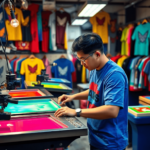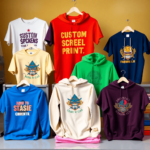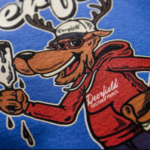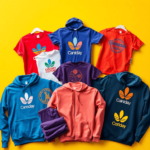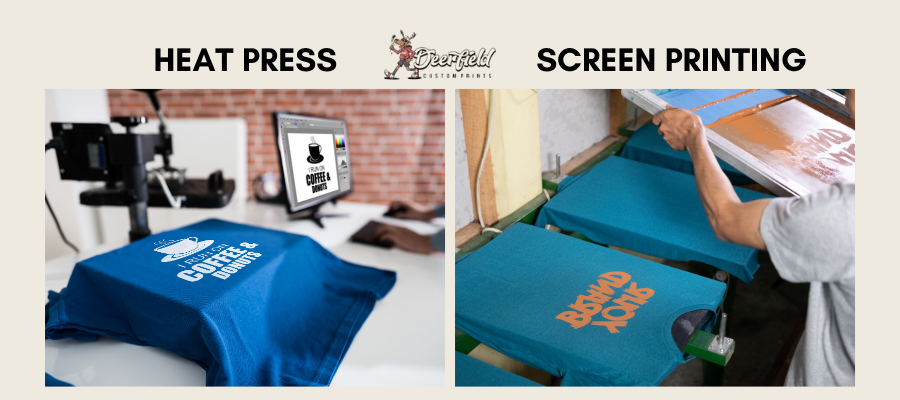
In the Screen Printing vs. Heat Press debate, your decision depends on the final logo’s cost-effectiveness, image quality, and durability. We’ll examine both the custom screen printing process and the custom transfer process to give you the information you need to decide between the two.
You have several options for printing a logo onto a T-shirt or promotional item. Screen printing and custom heat press are two standard options. The obvious question is: Which one is better? As with many other things in life, it depends.
Heat press and screen printing are two popular methods of creating customized clothing. The two techniques have distinct advantages and disadvantages. Which one you choose depends on your project’s requirements, preferences, and nature.
In this article, will explore the differences between screen printing and heat press, examining their distinct characteristics to help you make an informed decision for your custom clothing endeavors.
Heat Press
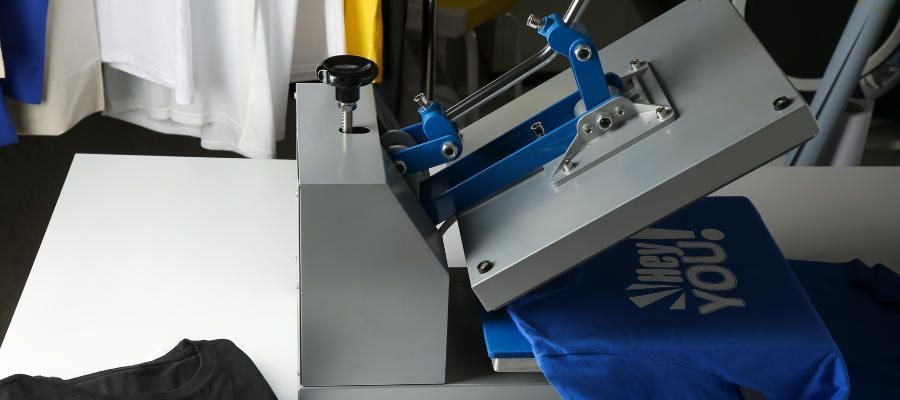
Heat press, also known as heat transfer printing, is a modern and versatile way to apply custom images or designs onto textiles. It machines combine heat and pressure to transfer designs from specially prepared heat transfer papers onto fabric. The heat makes the design adhere to the fabric and creates vivid, lasting imprints.
Here is a Heat Press Process:
- Design Preparation – The first step is to design or select the artwork or image that you wish to transfer onto your garment. This design can be created digitally, with intricate details, gradients, and full-color graphics.
- Printing your Design – After you have finished designing, print it onto special heat transfer papers using a sublimation or inkjet printer. It can also be cut out of heat transfer vinyl with a cutting machine.
- Heat Press Machine – The machine is at the heart of heat pressing. The machine comprises a heated flat platen and a lower heated platen, which applies pressure to the fabric. Heat press machines are available in various sizes and configurations. They can be manual, semi-automatic, or automatic.
- Heat Transfer – Place the heat transfer paper (or vinyl) with the design down on the fabric. Close the heat press machine, which will apply high pressure and heat to your fabric. Heat activates inks or adhesives on transfer materials, which adhere to fabric fibers.
- Peeling and Cooling – After a certain amount of time, the heat transfer material must be carefully peeled off, leaving the design imprinted permanently on the fabric. After the fabric cools, the design is set in place.
Heat Press is an excellent option for custom clothing with complex designs and smaller quantities. It offers quick results and vivid full-color graphics and lets you get your garments quickly.
Screen Printing

Screen printing, a traditional technique, involves the transference of ink to fabric via a mesh screen. The process is labor intensive, as it requires the creation of individual screens for each color in the design. The ink is then pressed onto the fabric through the screen. This is repeated for every color of the design.
Here is a Screen Printing Process:
- Design Separation – The first screen printing step is to separate a design into layers or colors. Each color of the design will require a separate screen. From fine mesh stretch, these screens are typically made on a frame.
- Screen preparation – Each screen is coated in a light-sensitive film after the separation of the design. The emulsion, in the form of a design, exposes to UV radiation through a positive film. The emulsion that has not been exposed is removed, leaving an open mesh pattern in the design area.
- Printing Setup – Prepared screens are mounted onto a screen-printing press. The fabric or substrate is placed onto a flat surface. This can be a platen, conveyor belt, or other flat surface.
- Ink application – Ink is applied on top of the screen. A squeegee pulls it across the screen, forcing the ink through the mesh to reach the fabric beneath. This is a repeat process with each color of the design.
- Curing – The printed fabric will be passed through a conveyor belt or dryer with heat to set and cure the ink. The colors will be vibrant and last a long time.
- Repeating the Process – The process is repeated until all colors are used in the design. This creates multi-color designs with intricate details.
Screen Printing is an excellent method for people who want vibrant, long-lasting colors and will place large orders.
Screen Printing vs. Heat Press
Both screen printing and heat press produce great T-shirt transfers. However, the designs created with each process have significant differences. With custom-made screen printing, the ink is lighter and lays more lightly on the fabric. This creates images that are durable and last longer. On the other hand, heat transfer images adhere to the fabric’s top layer with a thicker ink layer. A heat transfer image is less resistant to fading or cracking than a screen-printed image because it sits on top of the fabric.
Is screen printing the best option? Not necessarily. Screen printing works best for designs with few colors and simple images. Heat transfers are cheaper for small quantities, but screen printing is more economical for large quantities.
On the other hand, a custom heat transfer allows you to print in multiple colors simultaneously. Customizing shirts is easier with the ability to change out designs and letters. There are better options than screen printing for complex designs or photo replication. Heat transfers offer better resolution than screen printing but are more expensive for large quantities.
Screen Printing vs. T-shirt Heat Press
When deciding whether to use screen printing or custom heat transfers for T-shirt transfer, you should consider the design complexity, colors, durability, fabrics, and size of your order. This is a breakdown of when you should use screen printing or a T-shirt heat press.
Custom screen printing is a good option if you:
- Is your logo simple, and does it include bright colors?
- What is your target audience’s preference for high-quality and long-lasting clothing?
- Do you want to keep the softness of your Tri-blend shirt?
- Do you print simple logos on dark material?
- Do you need the product to withstand washing in a machine?
- Do you have a big order to fulfill?
- Will all shirts have the same lettering and logo?
- Do you need to meet a large order? All shirts have the same logo and lettering.
Custom heat transfers are a good option if you:
- Do you need to place a few small orders or make them frequently?
- Do you need to transfer a complex image with three or more colors?
- Do you need to personalize each transfer with different names and numbers for the team uniforms?
- Does your audience value environmentally friendly products (screen printing uses more chemicals than heat transfers)?
- For short-term usage, you need images of high quality.
What is the best method for YOU?

The choice between screen printing and heat press should be based on your unique needs, project details, and financial considerations.
The heat press is an excellent choice if you want to create designs quickly, intricately, and in small quantities. Screen printing is a better option if you are looking for a durable product with vibrant colors and want to order in bulk.
Consider your budget, your intended use for the clothing, your desired quantity, and the complexity of your design when making a decision. Our team of experts can provide valuable insight into the best method for your project. Heat press and screen printing both have distinct advantages. When chosen carefully, you can create custom apparel that matches your creative vision.

